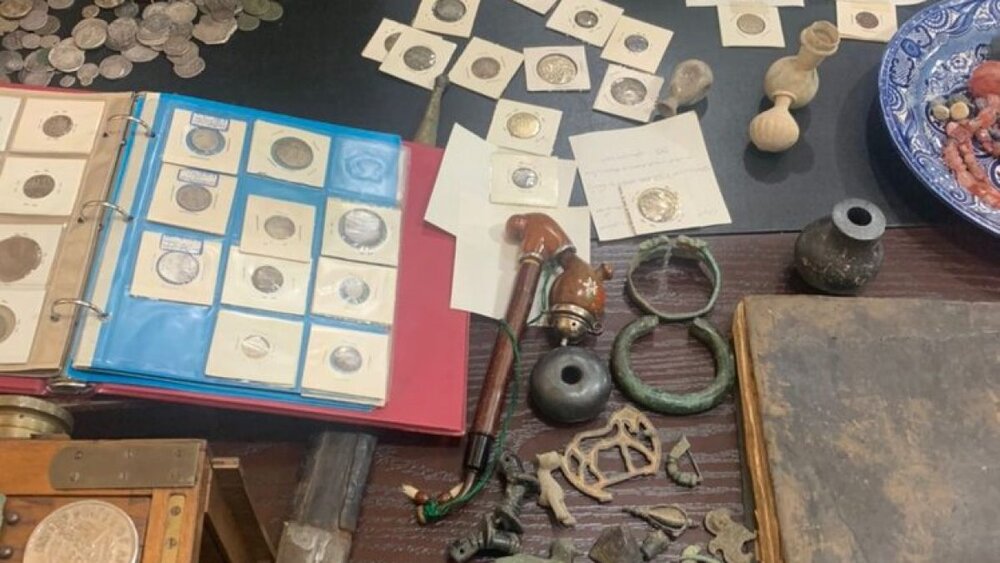570 relics including millennia-old objects confiscated by border security agents

TEHRAN – Iranian authorities have confiscated 570 relics some of which date from the first millennium BC from a cargo truck before it crosses an Iran-Turkey border.
“A truck carrying a large number of coins and antiques, some of which were 3,000 years old, was stopped by customs agents and about 570 items of antiques and coins were discovered before leaving the country,” ISNA quoted Seyyed Ruhollah Latifi, spokesman for the customs, as saying on Friday.
The truck, whose cargo was declared as home furniture shipping to Canada, was inspected by customs experts at the Bazargan border and before leaving the country for Turkey, and more than 570 pieces of historical objects such as books and coins were discovered, the official explained.
The recovered relics include 18 pieces of bronze related to the first millennium BC, an antique dagger, seven glass teardrop containers, 322 pieces of silver coins, 87 pieces of copper coins, 6 pieces of wire alloy.
Moreover, the haul of relics includes 59 pieces of rare coins, 36 pieces of album coins, two oval agate seals with Kufic scripts, a porcelain vase, 15 Qajar coins, a copper coin commemorating Baqer Khan (a key figure in the Iranian Constitutional Revolution), a one-dollar coin minted in 1845, 12 silver spoons, a brass samovar, a wooden camera, a plate bearing a portrait of Naser al-Din Shah Qajar, three brass trays dating from 1889, a gilded copy of Quran, and a rare storybook.
From a historical perspective, Iran has long played a significant role in the region. The country’s roots as a distinctive culture and society date to the Achaemenian period, which began in c. 550 BC. From that time the region that is now Iran—traditionally known as Persia—has been influenced by waves of indigenous and foreign conquerors and immigrants, including the Hellenistic Seleucids and native Parthians and Sasanids. Persia’s conquest by the Muslim Arabs in the 7th century CE was to leave the most lasting influence, however, as Iranian culture was all but completely subsumed under that of its conquerors.
According to Britannica, an Iranian cultural renaissance in the late 8th century led to a reawakening of Persian literary culture, though the Persian language was now highly Arabized and in Arabic script, and native Persian Islamic dynasties began to appear with the rise of the Ṭāhirids in the early 9th century. The region fell under the sway of successive waves of Persian, Turkish, and Mongol conquerors until the rise of the Safavids.
With the fall of the Safavids in 1736, rule passed into the hands of several short-lived dynasties leading to the rise of the Qajar line in 1796. The country’s difficulties led to the ascent in 1925 of the Pahlavi line, whose ill-planned efforts to modernize Iran led to widespread dissatisfaction and the dynasty’s subsequent overthrow by the 1979 Islamic Revolution.
AFM
